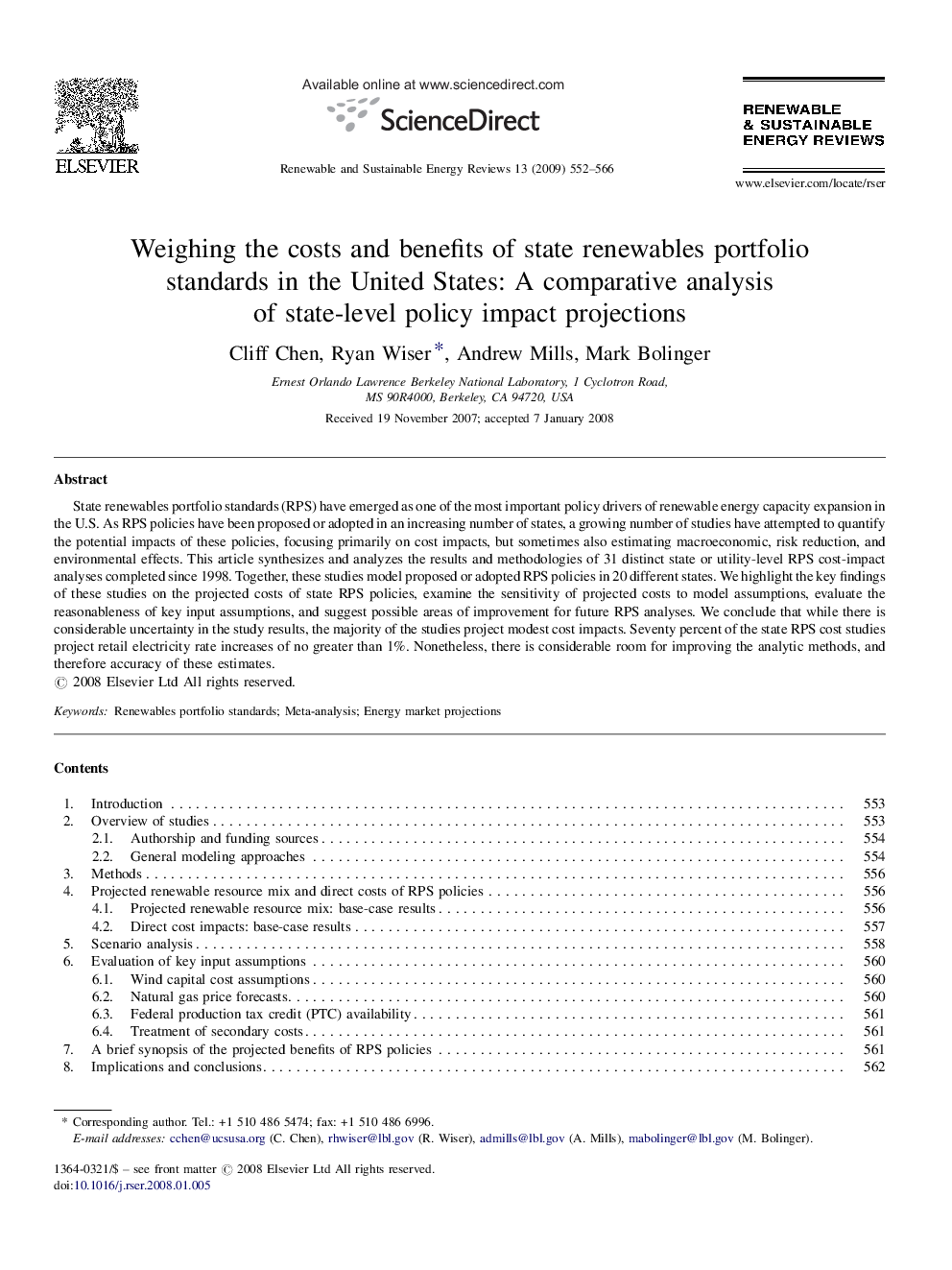| Article ID | Journal | Published Year | Pages | File Type |
|---|---|---|---|---|
| 1752189 | Renewable and Sustainable Energy Reviews | 2009 | 15 Pages |
State renewables portfolio standards (RPS) have emerged as one of the most important policy drivers of renewable energy capacity expansion in the U.S. As RPS policies have been proposed or adopted in an increasing number of states, a growing number of studies have attempted to quantify the potential impacts of these policies, focusing primarily on cost impacts, but sometimes also estimating macroeconomic, risk reduction, and environmental effects. This article synthesizes and analyzes the results and methodologies of 31 distinct state or utility-level RPS cost-impact analyses completed since 1998. Together, these studies model proposed or adopted RPS policies in 20 different states. We highlight the key findings of these studies on the projected costs of state RPS policies, examine the sensitivity of projected costs to model assumptions, evaluate the reasonableness of key input assumptions, and suggest possible areas of improvement for future RPS analyses. We conclude that while there is considerable uncertainty in the study results, the majority of the studies project modest cost impacts. Seventy percent of the state RPS cost studies project retail electricity rate increases of no greater than 1%. Nonetheless, there is considerable room for improving the analytic methods, and therefore accuracy of these estimates.
